News
New article on trait-environment relationships
October 31, 2024
Marion Boisseaux has published a new paper from her PhD thesis which was part of the METRADICA project. For this paper, she measured nine leaf functional traits for 552 trees which belonged to 21 species that can be find in the tropical forests of French Guiana. Leaf traits included: carbon content, minimum leaf conductance, potassium content, leaf saturated water content, stomatal density, major vein density, nitrogen content, phosphorus content, and turgor loss point. Tree species were divided into specialist species that can be found preferentially in terra firme (TF) or seasonally flooded (SF) forests and generalist species that can be found in both habitats. In the paper, we tested the influence of the topographic wetness index (TWI), a proxy for soil moisture and nutrient gradients, in determining trait values and trait syndromes (combinations of trait values). We found that while environment didn’t explain much of the trait value variation when traits were considered individually, it had a strong influence on trait syndromes. Trait value space was significantly constrained for extreme values of TWI (Fig. 1). This work highlights the need to investigate functional strategies as multidimensional trait syndromes to fully understand and predict species distribution along environmental gradients.
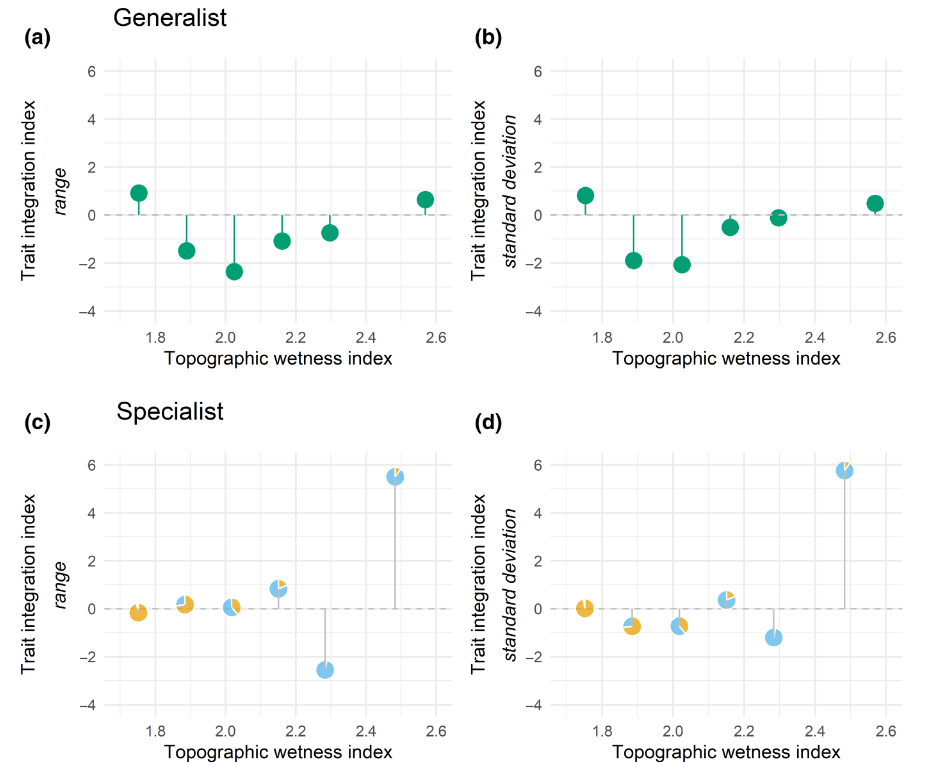
Boisseaux M., D. Nemetschek, C. Baraloto, B. Burban, A. Casado-Garcia, J. Cazal, J. Clément, G. Derroire, C. Fortunel, J.-Y. Goret, J. Heras, G. Jaouen, I. Maréchaux, C. Scoffoni, G. Vieilledent, J. Vleminckx, S. Coste, H. Schimann, C. Stahl. 2025. Shifting trait coordination along a soil-moisture-nutrient gradient in tropical forests. Functional Ecology. 39:1, 21–37. doi:10.1111/1365-2435.14679.  , Supplementary materials
, Supplementary materials 
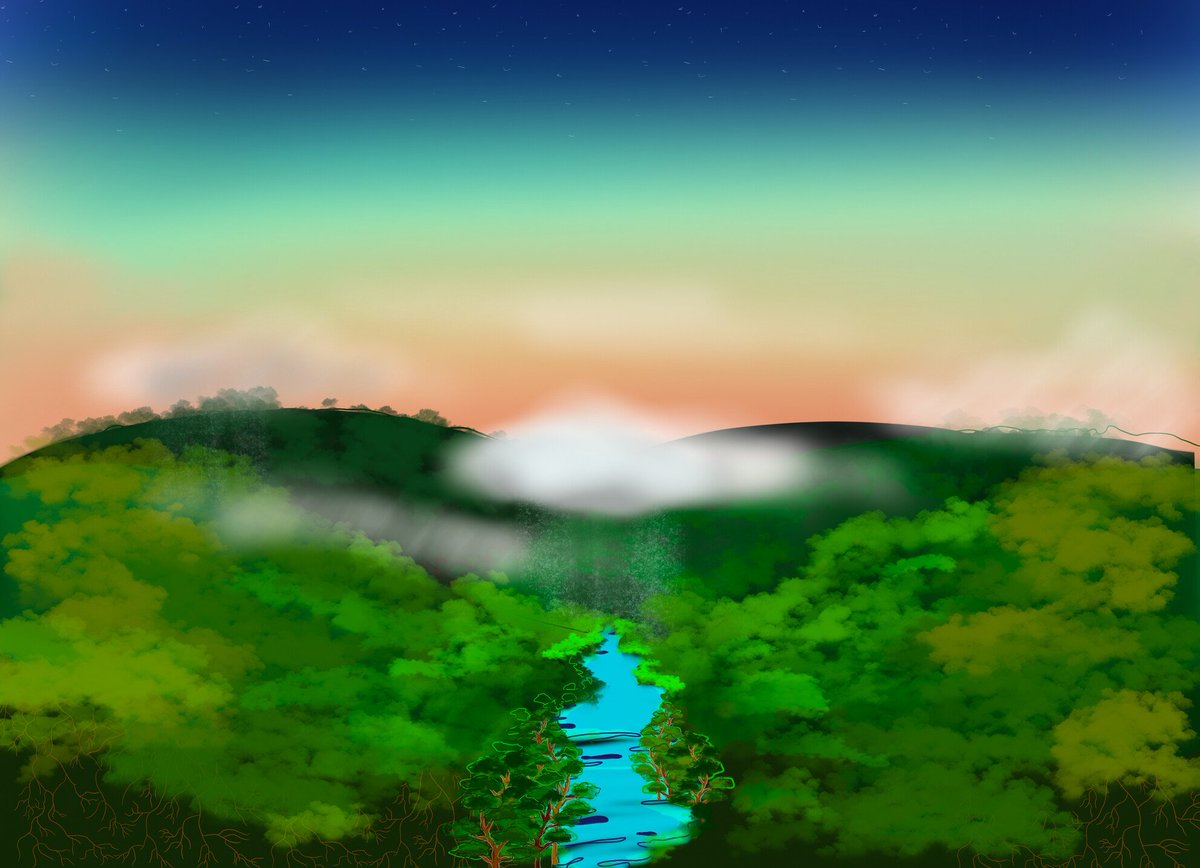
Above is an illustration of the article by Antía Iglesias. See also the related book written by Antía and Marion untitled “The multidimensionality of the plant: an art and ecophysiology approach to the comprehension of Amazonian tree seedlings” (https://hdl.handle.net/11093/5563).
Comparing community forests and protected areas in Madagascar
April 05, 2024
Together with Rachel Neugarten and colleagues, we published a paper comparing the effectiveness of community forests and protected areas in Madagascar in reducing deforestation. The comparison of the two conservation approaches was done before, during, and after the political crisis that prevailed in the country in the period 2009–2014. Quasi-experimental methods (statistical matching and event study) were used to control for site differences and other confounding factors. We found that the crisis and post-crisis dynamics negatively affected the performance of both community forests and protected areas in Madagascar, but that community forests were particularly vulnerable to strong post-crisis deforestation pressure (Fig 2). Further research is needed to better understand what explains the surge in deforestation after the political crisis but some hypothesis can be put forward to explain the higher vulnerability of community forests. Deforestation for agriculture and charcoal production is a way for communities to meet their basic needs, but at the expense of biodiversity. In Madagascar, community forests do not receive continuous financial support. Given the extremely high poverty rate and food insecurity, it is understandable that more deforestation is observed in community forests in times of crisis. A more detailed presentation of the study and its conclusions is available in an article published in the Research Communities blog by Springer Nature.
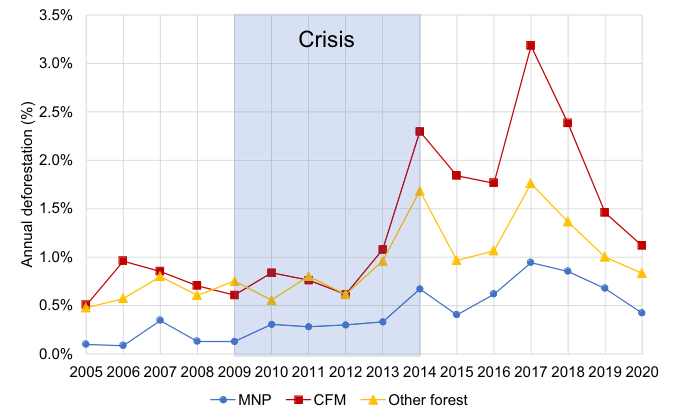
Neugarten R. A., R. A. Rasolofoson, C. B. Barrett, G. Vieilledent, and A. D. Rodewald. 2024. The effect of a political crisis on performance of community forests and protected areas in Madagascar. Nature Communications. 15:2863. doi:10.1038/s41467-024-47318-0.  , Supplementary materials
, Supplementary materials 
Reconnaissance mission in the Parc de la Rivière Bleue
Feb. 20, 2024
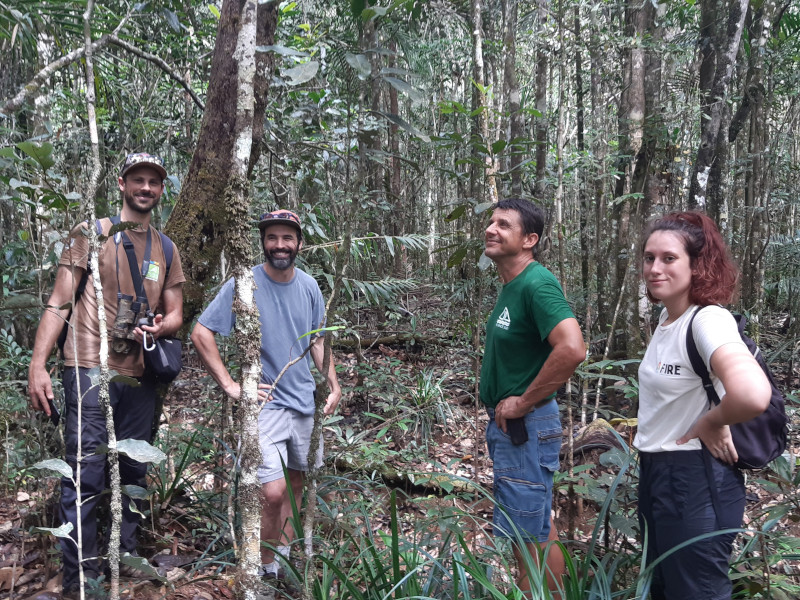
With Nathan, Thomas, and Coline, we went to the Parc provincial de la Rivière Bleue to look for suitable sites for the establishment of three 1 ha permanent forest inventory plots. We met with Jean-Marc Mériot, the director of the park. The plots must be accessible, relatively flat to facilitate the delimitation of a 100 x 100 m square area, and representative of the forest types found in the park. In addition, the forest should not show marks of anthropogenic disturbances (recent logging, hiking trails). Trees with a diameter at breast height (DBH) \(\geq\) 10 cm are positioned on the map, measured for DBH and height, and identified to the species level. The measurement of the diameter at breast height and the condition of the trees (recruit, living or dead trees) will be repeated over time (hopefully every two years). Data from the permanent forest plots will be used to study various ecological processes, including tree species demography, natural forest dynamics, species response to climate change, and forest carbon fluxes.
Quest to rediscover long-lost plant species in New-Caledonia
Feb. 19, 2024
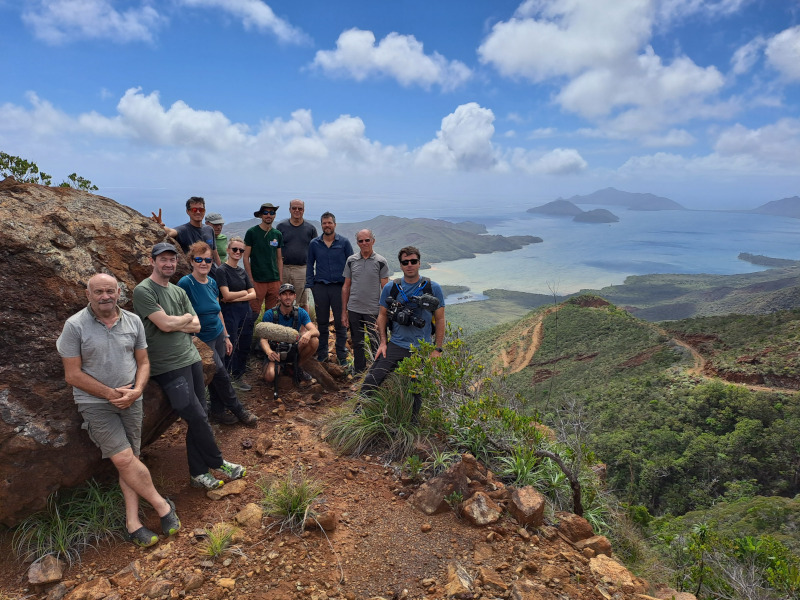
We spent five days searching for two long-lost plant species in the vicinity of Mount Humboldt on the east coast of New Caledonia: Canarium trifoliolatum (Burseraceae) and Litsea imbricata (Lauraceae). Canarium trifoliolatum was first collected in 1872 (152 years ago!) by Benjamin Balensa on the slopes of Mount Penari at an altitude of about 200 m and has not been seen since. Litsea imbricata was first collected by Balensa in 1872 on the slopes of Mount Humboldt at an altitude of about 700 m and a second time by Rudolf Schlechter in 1902 at about 1000 m in the mountains above the Ngoye River, but has not been seen since. The team was led by the two botanists David Bruy from IRD and Sébastien Traclet from the environmental non-governmental organisation Noé and also included volunteers from the New Caledonian Red List Authority (RLA). This mission was part of a project entitled “In search of long-lost plants” which is funded by the Inventaire national du patrimoine naturel (INPN) and coordinated by Endemia in New Caledonia. Our team was accompanied by a film crew, and a documentary film about the project is in preparation. Although we did not find both species, we did collect some interesting specimens, including a specimen of Beauprea penariensis (Proteaceae) at a new location, although this species was previously only known from Mount Penari. All the specimens we collected will be conserved at the herbarium of New Caledonia (NOU) in Nouméa. Herbarium data is invaluable: specimens are used in taxonomy to describe and classify the diversity of plants, but also in ecology and biogeography to understand the distribution of plant species and communities in relation to their environment.
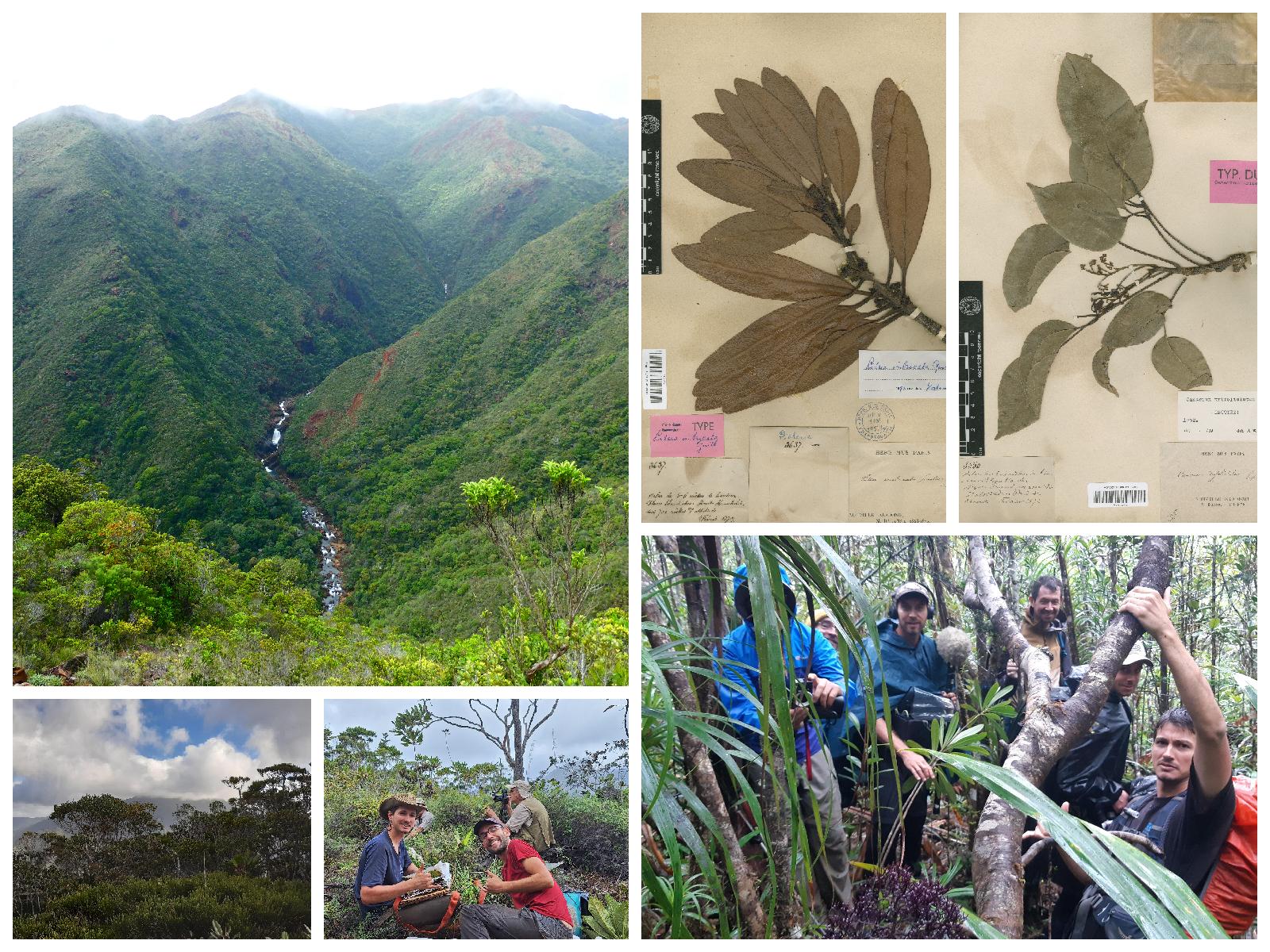
Accounting for intra-patch connectivity in landscape fragmentation indices
Feb. 11, 2024
Dimitri Justeau-Allaire, IRD researcher and colleague at UMR AMAP, has published a paper showing how to account for intra-patch connectivity in landscape fragmentation indices. Patches \(p\) of landscape are usually described by their area \(A_{p}\) (in m2) but no information is given on the connectivity between cells (or sites) within the patches. Two patches with the same area can have very different spatial configurations (Fig. 4). As a measure of intra-patch connectivity, we defined the “complexity-weighted patch area” of a patch as \(\text{CWA}_{p} = C_{p} \times A_{p}\), with \(C_{p}\) the patch complexity ranging from 0 (infinite high complexity) to 1 (optimal low complexity). Several indices can be used to define complexity \(C\), such as the shape index (SHAPE), the fractal dimension index (FRAC), or the mean detour index (MDI). The complexity-weighted patch area \(\text{CWA}\) can be used to replace the patch area \(A\) in several commonly used fragmentation or connectivity index such as the effective mesh size (MESH), the integral index of connectivity (IIC), or the probability of connectivity (PC). The R package intra provides functions to compute \(\text{CWA}\) using SHAPE, FRAC, or MDI as patch complexity indices. Based on a real case study considering the forest landscape in New Caledonia, we showed that considering intra-patch connectivity can substantially impact decisions regarding forest conservation or restoration planning.
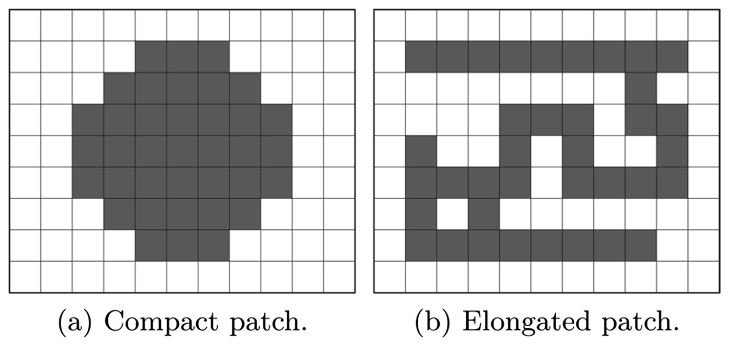
Justeau-Allaire D., T. Ibanez, G. Vieilledent, X. Lorca, and P. Birnbaum. 2024. Refining intra-patch connectivity measures in landscape fragmentation and connectivity indices. Landscape Ecology. 39, 24. doi:10.1007/s10980-024-01840-0. 
Collecting plant material in the Parc de la Rivière Bleue 🌿
Jan. 29, 2024
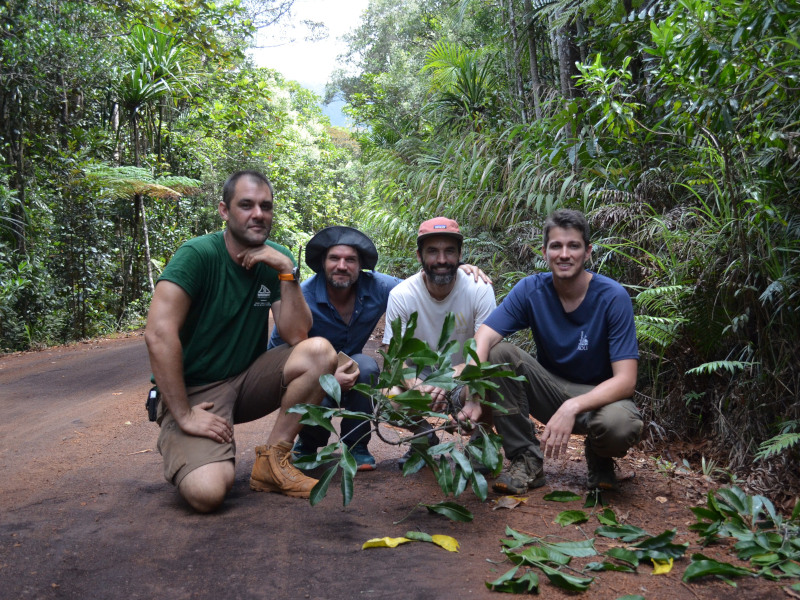
We spent a fantastic day collecting plant material in the Parc provincial de la Rivière Bleue. I was accompanied by Arnaud Lespes from the park and two of my colleagues from AMAP, David Bruy and Thomas Ibanez. David is the curator of the herbarium of New Caledonia (NOU) in Nouméa. During the day, we collected some branches with flowers of a new species of the genus Pycnandra (Sapotaceae) and a new species of the family Burseraceae. This is the first time that the flowers of these two new species have been observed and collected since their discovery more than 20 years ago! On the basis of this material, the two new species will be described and given scientific names. This work is being carried out by Jérôme Munzinger, a colleague and taxonomist at AMAP, and a specialist in the flora of New Caledonia. We have also collected some branches of the only known individual of the species Dutailliopsis gordonii (Rutaceae) with fruits and floral buds. This material will be used for a genetic analysis to confirm the relevance of the monospecific genus Dutailliopsis. Post-scriptum: A list of plant species occurring in New Caledonia can be found on the Endemia website.
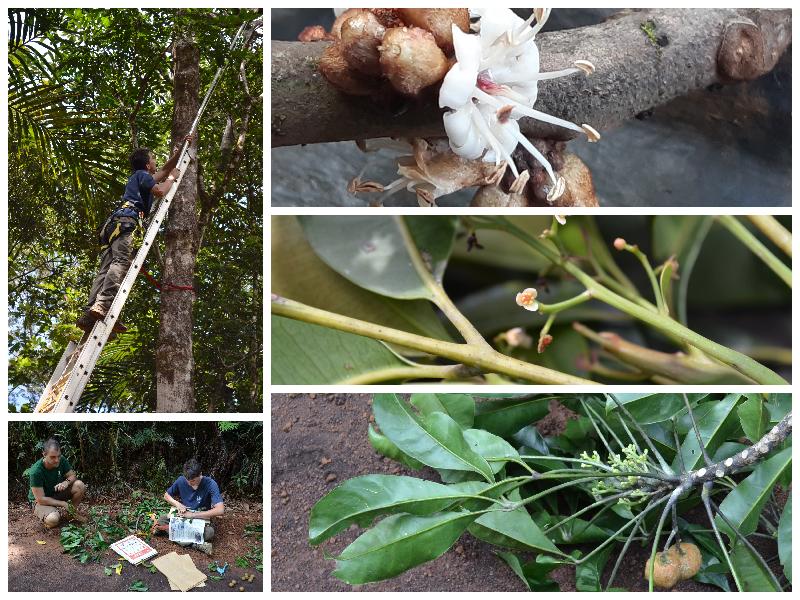
New article by Camille on using variance for representing intraspecific variability
Jan. 11, 2024
The second article of Camille’s PhD has been recommended by Matthieu Barbier for PCI Ecology based on reviews by Simon Blanchet and Bart Haegeman and published in PC Journal, section Ecology. This article has the following title* “Beyond variance: simple random distributions are not a good proxy for intraspecific variability in systems with environmental structure”. In nature, a high proportion of intraspecific variability can emerge from unmeasured environmental variables varying in space and time, as shown in the first article of Camille’s PhD. In this second article, we show that when individual performance are determined by a varying multidimensional environment (15 variables in our case), the fact of representing intraspecific variability with a variance around species means, when several dimensions of the environment are not observed, leads to incorrect simulations of community dynamics in term of number of coexisting species and community composition. When a variance is used to represent intraspecific variability, conspecific individuals (i.e. individuals from the same species) have different performance in the same environment. On the contrary, when observed intraspecific variability emerges from a variable environment in multiple dimensions, this does not imply that conspecific individuals are intrinsically different. In this case, conspecific individuals have identical performance in the same environment. This difference between random and structured intraspecific variability has large consequences on community dynamics in community models. When individual variability is random, community dynamics is stochastic, leading to an ecological drift and the extinction of many species. On the contrary, when intraspecific variability is the result of the variation of the environment in multiple dimensions, each species is able to outperform the other at some sites with particular environmental conditions, thus allowing the coexistence of a high number of species. This important distinction and the results of our study have been very well summarized in Matthieu Barbier’s recommendation untitled “Two paradigms for intraspecific variability”.
* The title refers to the article by Violle et al. 2012 “The return of the variance: intraspecific variability in community ecology”.

Girard-Tercieux C., G. Vieilledent, A. T. Clark, J. S. Clark, B. Courbaud, C. Fortunel, G. Kunstler, R. Pélissier, N. Rüger, and I. Maréchaux. 2024. Beyond variance: simple random distributions are not a good proxy for intraspecific variability in systems with environmental structure. Peer Community Journal, section Ecology. 4:e28. doi:10.24072/pcjournal.360 bioRxiv: 503032.  , Supplementary materials
, Supplementary materials 
Barbier, M. 2024. Two paradigms for intraspecific variability. Peer Community in Ecology, 100466. doi:10.24072/pci.ecology.100466.
Moving to New Caledonia 🇳🇨
Dec. 07, 2023
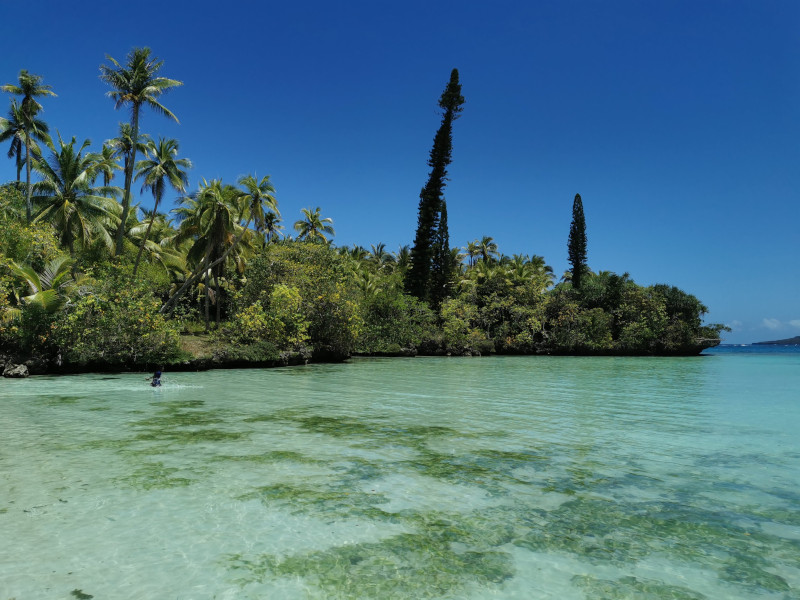
I am moving with the family to New Caledonia for at least one year to study the functioning of tropical forest ecosystems there. I will be based at the IRD research center in Noumea. During my stay, I will be affiliated to Cirad in the UMR AMAP (my current institution and lab) but also to the IAC (Institut Agronomique néo-Calédonien), the Cirad historical partner in New Caledonia. I will collaborate with colleagues from IAC and UMR AMAP based at IRD, and in particular with Thomas Ibanez who is also coming to perform ecological research in New Caledonia for several years. With Thomas, we plan to develop a network of permanent forest plots in the Melanesian islands (New Caledonia, Bismark archipelago, Solomon islands, Vanuatu, Fiji). We will also develop a forest monitoring system in New Caledonia using forest inventories, LiDAR data, and satellite images to identify changes in tropical forest cover and carbon stocks. Other research activities will include mapping tree communities and soil properties at the scale of New Caledonia to help decision on forest and biodiversity conservation.
Last INTRACO workshop at sDiv #6
Sep. 29, 2023
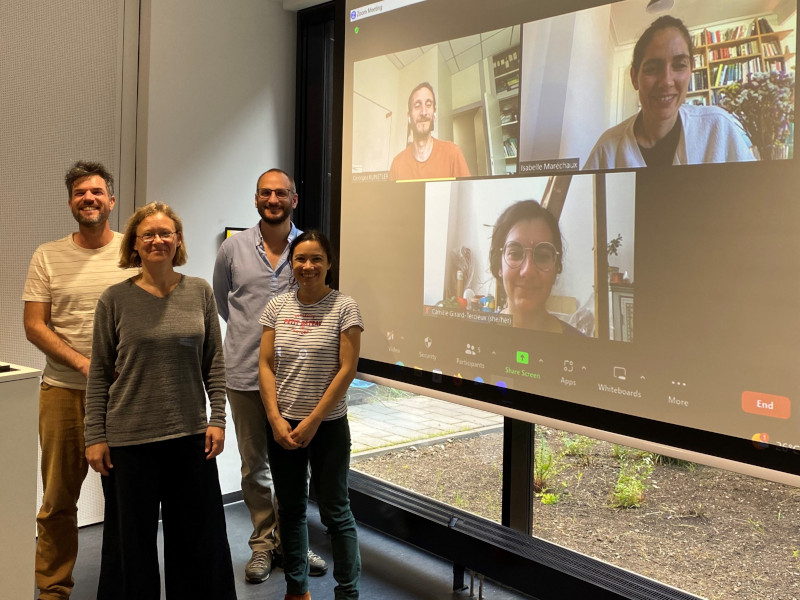
The last INTRACO workshop took place at sDiv in Leipzig from September 26 to 29, 2023. We discussed the review of Camille’s second paper on including random unstructured intraspecific variability in community dynamics models. We also started interpreting the results comparing intraspecific vs. interspecific correlations in growth and fecundity for different forest types.
Article on tropical forests in Le Figaro
Aug. 28, 2023
The article in Le Figaro (the second-largest national newspaper in France), presents the results of two scientific studies. The first study published in Science Advances shows that the productivity of tropical reforestation in Central America will decline sharply and continuously by -11% per degree of warming above 29°C of mean annual temperature. As a result, following high-emission pathways could reduce the effectiveness of reforestation as a climate action tool. The second study published in Nature suggests that a tipping point in metabolic function in tropical forests could occur with 3.9 ± 0.5°C of additional warming. Authors used a value of 46.7°C for \(T_{crit}\), the temperature at which irreversible damage to the photosynthetic machinery occurs. The +4.0°C estimate is within the “worst-case scenario” (RCP 8.5) of climate change predictions for tropical forests. Massive tree deaths in tropical forests could therefore be avoided if we mitigate global warming by not following RCP 8.5.
Collecting soil samples in French Guiana 🌎
Jul. 13, 2023

For the METRADICA project, Vincent Freycon and I did a field mission in French Guiana to collect tropical forest soil samples. We spent some days in the forest at Montagne de Kaw, Montagne Tortue, Piste de Saint-Elie, and Paracou. Several people helped us dig soil pits and collect samples including Pierre-André Wagner, Clément Stahl, Benoît Burban, Jocelyn Cazal, Michel Baisie, and Olivier Brunaux. We have learnt a lot from Vincent who shared his knowledge and long experience studying tropical soils. Samples will be sent to the Cirad soil laboratory to measure soil particule size distribution (clay, silt, and sand contents), and soil water retention (in particular, the field capacity and the permanent wilting point). These measurements will be added to a regional soil database that will be used to derive maps of soil texture and plant water availability for French Guiana. This work will be performed by Salman who is doing his post-doc within the METRADICA project. More accurate information on soils should help us understand better the distribution of tree species in French Guiana and anticipate species range shifts under climate change.
INTRACO workshop at Cesab #5
Jun. 23, 2023
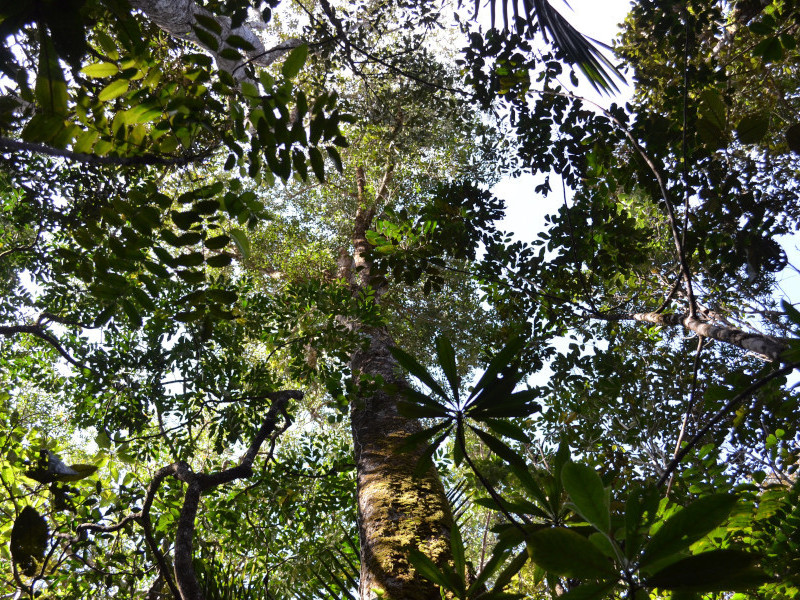
We organized the 5th INTRACO workshop at Cesab in Montpellier. Claire, Isabelle, Benoît, Jim, Georges, and I were able to attend in person while Nadja participated remotely. We worked on two papers. The first one uses a theoretical model to illustrate a simple mechanism allowing the coexistence of a large number of competing species. In particular, this model does not rely on tight low-dimensional trade-offs to make species coexist. We discussed ways to improve the narrative of the paper and make it more accessible to a broad audience and worked on a synthetic figure. The second paper includes data analysis in boreal, temperate, and tropical forests to see if this mechanism is ubiquitous in nature. We thus spent some days analysing forest inventory data and comparing results between forest types.
PhD position within the ANR EDENE project
May 10, 2023
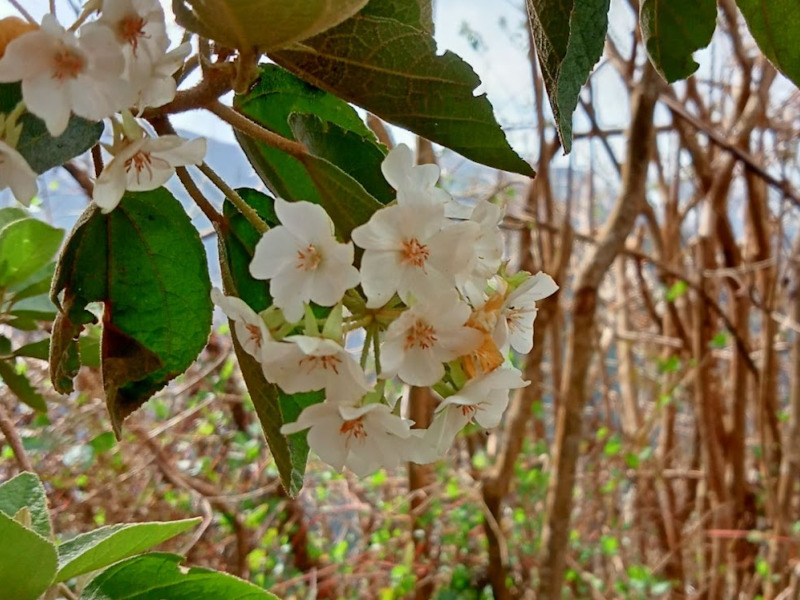
We have opened a PhD position within the ANR EDENE project. The research work will be focused on biotic interactions between alien plant species and threatened tree species in the Mascarene Islands (Indian ocean). Forest plot inventories and community models (Joint Species Distribution Models) will be used to try to infer interactions between species. The PhD is fully funded for three years and should not start after the 31st of July 2023. The PhD student will be based in the Reunion Island and will work under the supervision of Robin Pouteau. Details are available on the AMAP website.
Canopy structure modulates edge effect in forests
May 09, 2023
Grégoire Blanchard, post-doc at UMR AMAP and IAC (Institut Agronomique Néo-Calédonien), has conducted a nice study to better characterise the edge effect in New Caledonian forests. The data used for the analysis included 46 forest inventory plots of 400 m2 located at different distances from the forest edge, tree species functional traits (wood density, leaf area, specific leaf area, and leaf dry matter content), microclimate data (maximum vapour pressure deficit) from 46 HOBO data loggers positioned within the forest plots, and UAV–Lidar derived data on canopy height and canopy gap fraction at 5 m resolution covering an area of 4 km2 including the forest plots. This extensive fieldwork and data collection was carried out in 2020 and 2021. The 2093 sampled trees belonged to 107 species. The results show that the microclimate, structure and composition of the forest changed rapidly with distance to the forest edge, confirming the results of previous studies. Most interestingly, however, the canopy structure explained better the microclimate and composition of the forest at the local level than the distance to the forest edge. This means that a site that is far from the distance to the forest edge, but has a low canopy height and a high canopy gap fraction can potentially have a high vapour pressure deficit that is similar or even stronger than what could be generally observed at a site close to the forest edge. Therefore, long-term forest degradation leading to long lasting changes in canopy structure can have significant impacts on microclimate and forest composition that cannot be explained by distance to the forest edge alone.
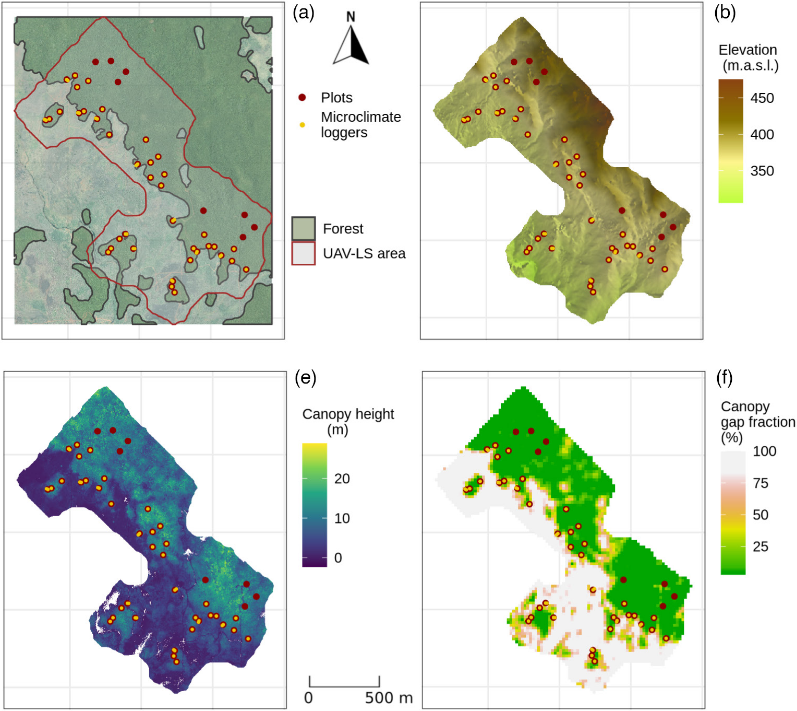
Blanchard G., N. Barbier, G. Vieilledent, T. Ibanez, V. Hequet, S. McCoy, and P. Birnbaum. 2023. UAV-Lidar reveals that canopy structure mediates the influence of edge effects on forest diversity, function and microclimate. Journal of Ecology. doi:10.1111/1365-2745.14105.  , Supplementary materials
, Supplementary materials 
Tree species on ultramafic soils in New Caledonia
Mar. 31, 2023
Philippe Birnbaum and Thomas Ibanez from UMR AMAP have compiled an impressive dataset of 169,376 tree occurrences in New Caledonia. The trees in this dataset belong to 1176 species, 93 families, and 285 genera. Occurrences were retrieved from the New Caledonian Plant Inventory and Permanent Plot Network (NC-PIPPN), the Herbarium of New Caledonia database (NOU), GBIF, and other additional datasets. Among these species, 303 species (28%) were found preferentially (> 90% of their occurrences) on ultramafic soils, and 62 species were found exclusively on this soil type. Ultramafic soils, which cover 33% of New Caledonia, have low nutrient concentrations (N, P, and K) and high magnesium concentrations (Mg) leading to calcium (Ca) deficiency (low Ca/Mg ratio) or Mg toxicity. They also often have high concentrations of potentially phytotoxic elements such as nickel (Ni), manganese (Mn), or chromium (Cr), and generally have low water-holding capacity. Evolution has therefore selected tree species with unique adaptative strategies to grow and survive in this constrained environment. According to the results of the article, 91% of the tree species found on ultramafic soils are endemic to New Caledonia. Interestingly, tree communities on ultramafic soils in New Caledonia were found to vary depending on the location of ultramafic areas, suggesting that environmental factors other than soil filter species and determine species composition. Tree species that prefer ultramafic soils are potentially threatened by mining activities, particularly nickel mining. In the article, the authors emphasize that the protected area network should be expanded to cover more ultramafic areas in New Caledonia.
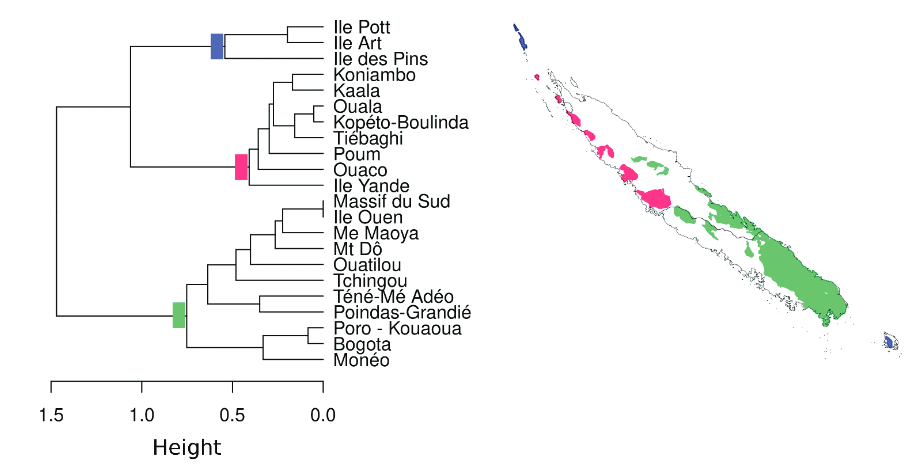
Birnbaum P., T. Ibanez, G. Blanchard, D. Justeau-Allaire, V. Hequet, N. Eltabet, G. Vieilledent, N. Barbier, R. Barrière, and D. Bruy. 2023. Forest and tree species distribution on the ultramafic substrates of New Caledonia. Botany Letters. doi:10.1080/23818107.2023.2181216. 
Metradica workshop in Montpellier
Mar. 10, 2023
We have organized a five-day workshop at AMAP in Montpellier on 6-10 March, 2023 for the METRADICA project. We had 12 participants in total along the week. We advanced the work on the different tasks of the project and discussed the first results obtained by Marion, Jeanne, and Salman since the beginning of their PhD and postdoc within the project.
Camille’s first article on rethinking the nature of intraspecific variability
Mar. 9, 2023
The first article of Camille’s PhD has been accepted for publication in Ecology and Evolution. Congratulations Camille! I think this article is important to understand better the nature of intraspecific variability and improve our understanding of the coexistence of a large number of species competing for the same resources (the “biodiversity paradox”) in hyper-diverse communities, such as tropical forests. In the article, we show that a large part of the intraspecific variability observed in trees can be associated with an incomplete characterization of the environment. We show that the large intraspecific variability observed in data does not imply species niche overlap and that individuals of the same species have more similar performances than individuals from different species in a given environment. These results have important implications for elucidating the biodiversity paradox. Community models achieving coexistence of a large number of species commonly rely on low-dimensional perfect trade-offs or neutral processes, which does not correspond to our naturalistic knowledge of species and habitats. We thus defend the idea of a multidimensional niche à la Hutchinson to explain species coexistence. Each species is different and outperforms the others in a given environment, which varies in space and time in a high number of dimensions, thus allowing the coexistence of a large number of species.
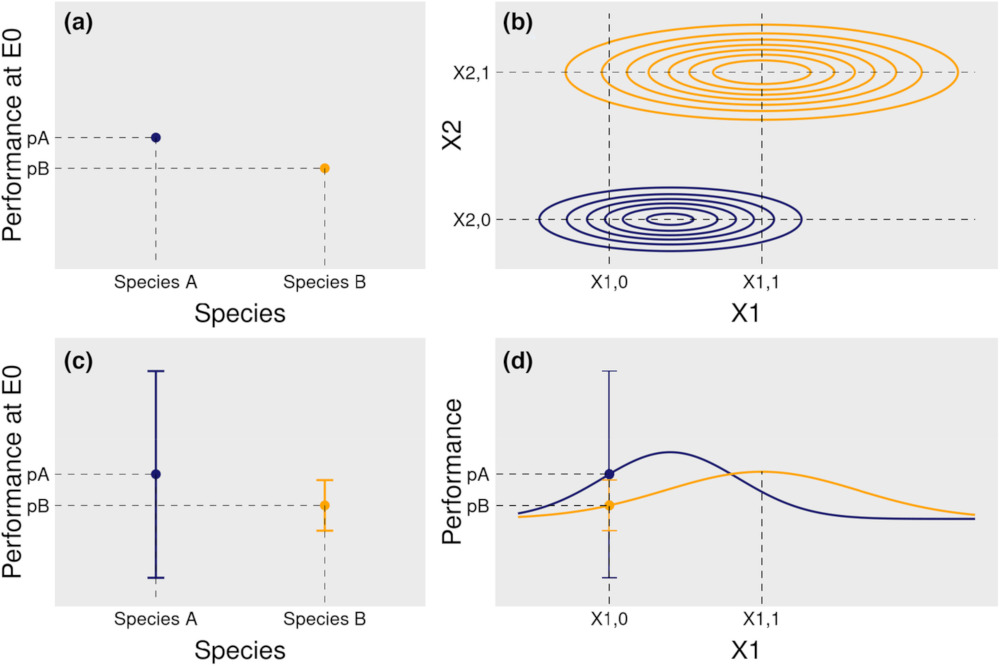
Girard-Tercieux C., I. Maréchaux, A. T. Clark, J. S. Clark, B. Courbaud, C. Fortunel, J. Guillemot, G. Kunstler, G. le Maire, R. Pélissier, N. Rüger, and G. Vieilledent. 2023. Rethinking the nature of intraspecific variability and its consequences on species coexistence. Ecology and Evolution. 13 (3): e9860. doi:10.1002/ece3.9860. bioRxiv: 484259.  , Supplementary materials
, Supplementary materials 
Video portrait by Cirad
Release of riskmapjnr v1.2
Feb. 11, 2023
Version 1.2 of the riskmapjnr Python package has been released. The package allows obtaining maps of the deforestation risk for any jurisdiction following the methodology defined in the first version of the JNR Risk Mapping Tool.
Story on Madagascar’s baobabs
Camille Girard-Tercieux PhD defense
Dec. 16, 2022
Congratulations to Camille who has brilliantly defended her PhD thesis at the University of Montpellier. Thanks to Aude Valade, Sean McMahon, and Björn Reineking for having accepted to be part of the jury.
Mission to New Caledonia
Oct. 11, 2022 – Nov. 28, 2022
Mission to New-Caledonia for the end of the RELIQUES project funded by CNRT. The mission included some field work with the remeasurement of a 1-ha forest plot in the South of the island.
INTRACO workshop at Cesab #4
Sep. 19-23, 2022
INTRACO workshop at Cesab in Montpellier. We spent the week analysing forest inventory data from boreal, temperate, and tropical regions.